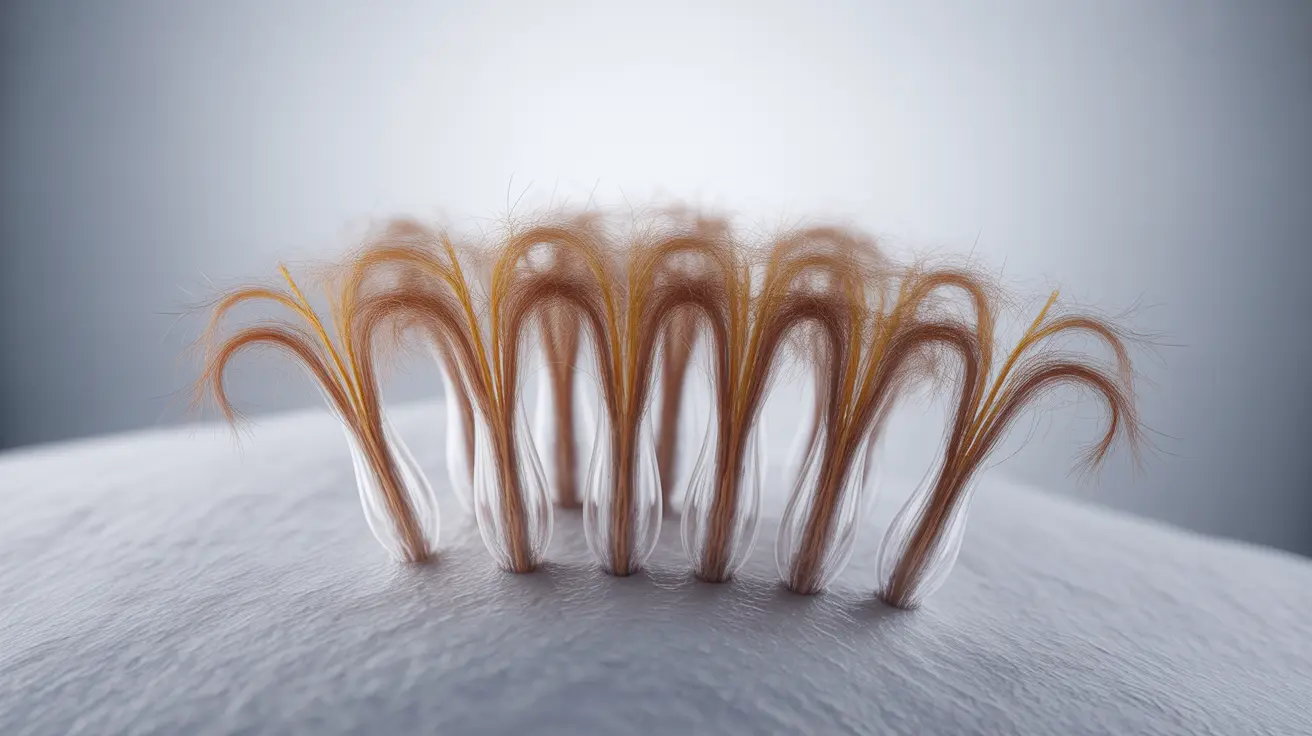When you notice multiple hairs growing from a single follicle, you might be experiencing a condition called pili multigemini. This unique hair growth pattern occurs when several hair shafts emerge from one follicular opening, creating what appears to be clustered or compound hairs. While this condition isn't typically harmful, understanding its causes, symptoms, and management options can help you make informed decisions about treatment.
This comprehensive guide will explore the nature of multiple-hair follicles, their causes, and various approaches to managing this condition effectively.
Understanding Pili Multigemini
Pili multigemini occurs when a single hair follicle produces multiple hair shafts instead of just one. This phenomenon typically develops during the formation of hair follicles, resulting in the splitting or multiplication of the dermal papilla, the structure responsible for hair growth. The condition most commonly affects the beard area in men and can also appear on other body parts.
Common Characteristics and Signs
Identifying pili multigemini involves recognizing several distinct features:
- Multiple hairs emerging from one visible follicular opening
- Hairs appearing thicker or more coarse than surrounding single hairs
- Clustered growth pattern
- Most commonly observed in beard area, scalp, or pubic region
- Sometimes accompanied by mild irritation or ingrown hairs
Causes and Risk Factors
The exact cause of multiple hairs growing from one follicle isn't fully understood, but several factors may contribute:
- Genetic predisposition
- Developmental changes during follicle formation
- Hormonal influences
- Possible environmental factors
Diagnosis and Assessment
Healthcare providers can typically diagnose pili multigemini through visual examination and dermoscopy, a non-invasive technique that allows closer inspection of the skin and hair follicles. This helps distinguish the condition from other hair growth abnormalities.
Management Approaches
Several options exist for managing multiple hairs in one follicle:
Conservative Methods
These include:
- Regular exfoliation to prevent ingrown hairs
- Proper shaving techniques
- Moisturizing to maintain skin health
- Using appropriate hair removal products
Professional Treatments
For those seeking more permanent solutions:
- Laser hair removal (though results may vary)
- Electrolysis
- Professional extraction when necessary
Prevention Strategies
While you can't prevent the underlying condition, you can minimize complications by:
- Maintaining good skin hygiene
- Using appropriate grooming tools
- Avoiding aggressive hair removal methods
- Following proper shaving practices
Frequently Asked Questions
What causes multiple hairs to grow from one hair follicle in pili multigemini? Pili multigemini occurs when the dermal papilla splits during follicle development, causing multiple hair shafts to form within a single follicle. Genetic factors and developmental changes are believed to be the primary causes, though the exact mechanism isn't fully understood.
How can I tell if I have pili multigemini or another hair condition? You can identify pili multigemini by observing multiple distinct hair shafts emerging from a single follicular opening. The condition is most common in the beard area and appears as clustered hair growth. A healthcare provider can confirm the diagnosis through visual examination or dermoscopy.
Is pili multigemini harmful or likely to cause skin problems? Pili multigemini is generally harmless and doesn't cause serious health issues. However, it may occasionally lead to mild irritation, ingrown hairs, or discomfort during hair removal. Proper skin care and hair removal techniques can help minimize these issues.
What treatment options are available for managing multiple hairs in a single follicle? Treatment options range from conservative approaches like proper grooming techniques and exfoliation to professional treatments such as laser hair removal or electrolysis. The choice of treatment depends on the severity of the condition and personal preferences.
Can laser hair removal effectively treat pili multigemini and what challenges does it present? Laser hair removal can be effective for treating pili multigemini, but results may vary. The presence of multiple hairs in one follicle can sometimes make the treatment more challenging, and multiple sessions might be needed. It's important to work with a qualified professional who has experience treating this condition.




